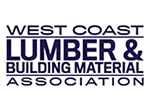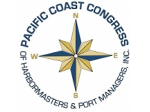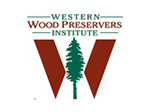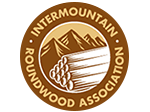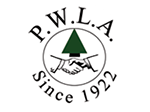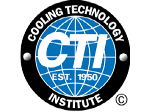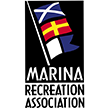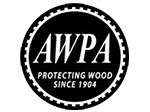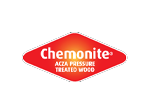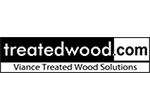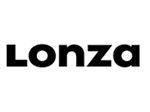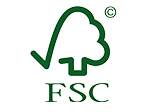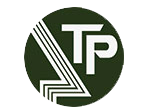BMP Quality Assurance Program
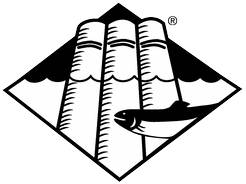 Best Management Practices (BMPs) Quality Assurance Program, as published by the Western Wood Preservers Institute (WWPI), provides specific parameters for pressure treating wood products for use in sensitive aquatic and wetland environments in the Western United States and Canada. Its goal is to minimize the amount of preservative placed in the wood while assuring conformance with the established treating standards of the American Wood Protection Association (AWPA). Pressure treated wood is a building material widely used to construct piers, docks, building, walks and decks used in or over aquatic and wetland environments.
Best Management Practices (BMPs) Quality Assurance Program, as published by the Western Wood Preservers Institute (WWPI), provides specific parameters for pressure treating wood products for use in sensitive aquatic and wetland environments in the Western United States and Canada. Its goal is to minimize the amount of preservative placed in the wood while assuring conformance with the established treating standards of the American Wood Protection Association (AWPA). Pressure treated wood is a building material widely used to construct piers, docks, building, walks and decks used in or over aquatic and wetland environments.
Thunderbolt Wood Treating is committed to assuring its products are manufactured in a responsible manner that minimizes any potential for adverse impacts to our environment. Protection of the quality of water and the diverse of life forms found in lakes, streams, estuaries, bays and wetlands environments of North America is a goal and responsibility shared by everyone. It is everyone’s responsibility to maintain the quality of our treasured resources. Achieving the shared goal of the BMPs cannot be accomplished unless the user of the product follows the appropriate guidelines regarding transportation, handling, inspection, storage, installation, demolition, maintenance and disposal of treated wood products.
Help is Available
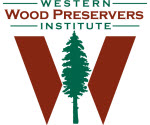 Risk assessment documents and models have been developed for the use of most preservative systems used in aquatic applications. Projects that are designed to use small volumes of treated wood immersed in and/or above water can be evaluated utilizing minimal site specific information as where projects with large volumes may require more detailed site specific information. A complete set of guide materials and peer approval risk assessment tools are available to help evaluate environmental risks, select preservative system, and specify products are available online at www.WWPInstitute.org.
Risk assessment documents and models have been developed for the use of most preservative systems used in aquatic applications. Projects that are designed to use small volumes of treated wood immersed in and/or above water can be evaluated utilizing minimal site specific information as where projects with large volumes may require more detailed site specific information. A complete set of guide materials and peer approval risk assessment tools are available to help evaluate environmental risks, select preservative system, and specify products are available online at www.WWPInstitute.org.
Specifying the Best Management Practices
There are three steps to assuring that products to be used in aquatic and wetland environments are produced in compliance with the BMPs’:
- Specify the appropriate material in terms of preservative and performance as defined by the American Wood Protection Association (AWPA).
- Specify that the material must be produced and utilized in compliance with the BMP’s.
- Require Third Party Independent Inspection agency assurance that the products are produced in conformance with the BMPs.
The presence of the BMP Mark must be legibly stamped, branded, marked, end tagged or an equivalent designation on each piece of material or lot arriving on site. Or in lieu of placing the BMP Mark on each piece of material or lot, a certificate of compliance issued and signed by a WWPI qualified inspection agency certifying that the material and/or its production was inspected in compliance with the, “Quality Assurance Inspection Procedures for Best Management Practices for the use of Treated Wood in the Aquatic and Wetland Environments”. The BMP Mark shall be shown on the Certificate of Compliance.
Inspection
The following inspection guidelines are key factors in producing and providing a quality treatment and a clean BMP produce.
- To the degree practical material should be inspected to assure it is reasonably clean and free of dirt and sawdust prior to treating.
- The plant operator shall inspect treating solutions and plant filters to assure the treating solution is free of debris and meets the requirement for the specific preservative.
- A visual inspection shall be performed to verify the treated products meet the criteria specified for BMP processed material and that no excessive residues or surface deposits are present. If the criteria is not met, the product shall be rejected or reprocessed using appropriate post treatment conditioning technologies to meet the BMP surface appearance criteria.
- Since the occurrence of natural variability of wood sampled in a charge or production lot is recognized, re-inspection is permitted when there is a dispute over BMP conformance. This should be conducted prior to a decision for re-treatment.
- A final visual inspection shall be conducted prior to the material leaving the treating facility to ensure the surface and treated product has no evidence of excessive residue or preservative deposits present or have not developed any excessive bleeding and to verify the presence of the BMP trademark on the material or treating certification. Any problems detected shall be corrected prior to shipping.
Documentation
